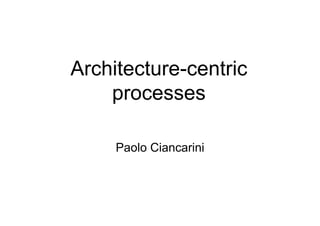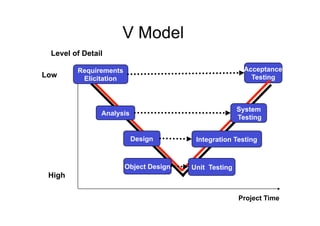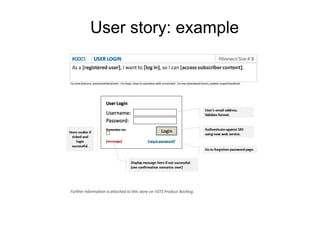The document discusses architecture-centric software development processes. It describes traditional waterfall and iterative development models, and notes that iterative models allow for more flexibility to changing requirements. Agile development methods like eXtreme Programming (XP) are discussed, which emphasize iterative development, collaboration, and rapid delivery of working software. Key practices of XP are outlined, including user stories, testing, pair programming, refactoring, and continuous integration. The role of architecture in agile processes is also addressed.































































